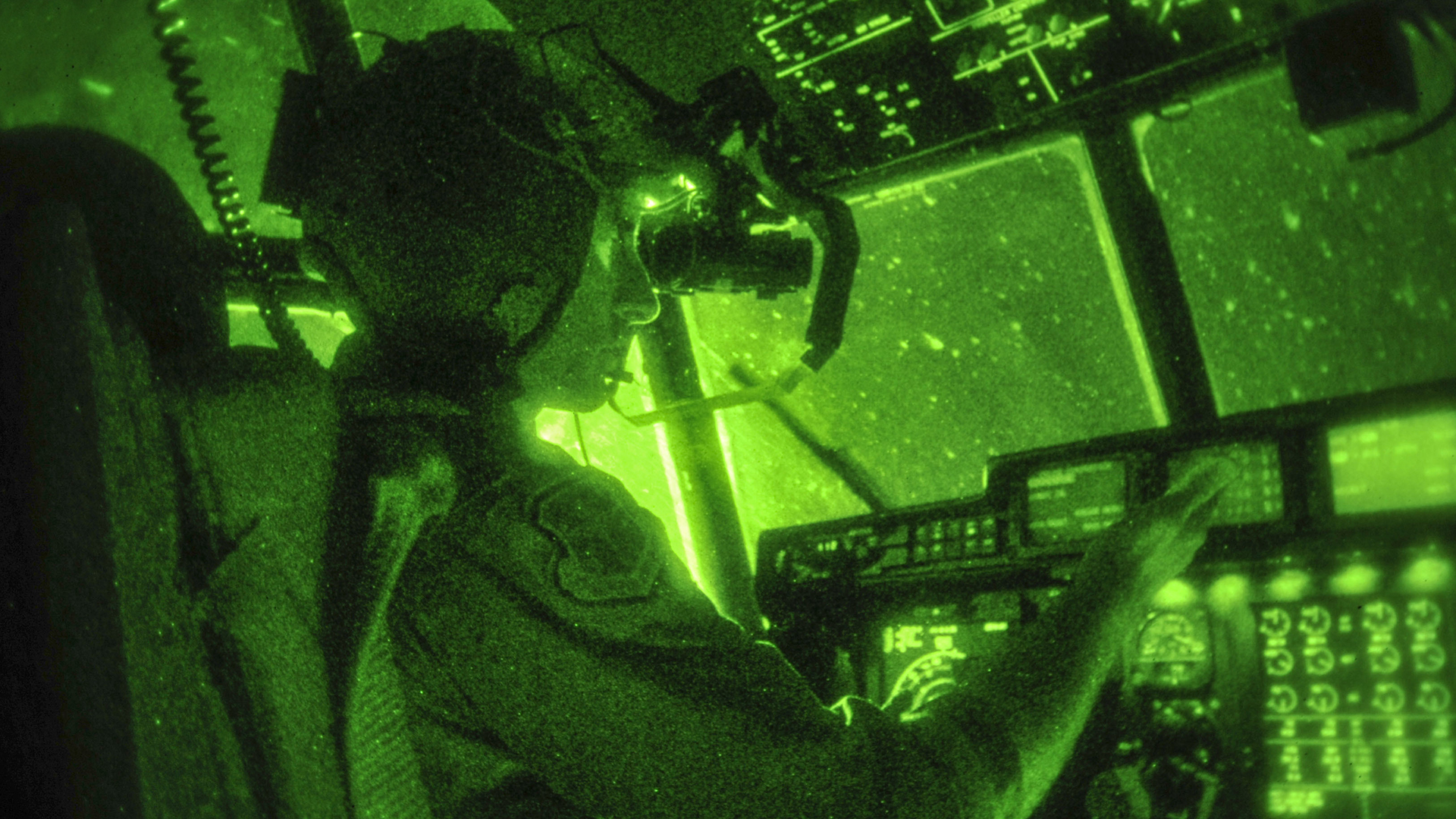The U.S. Air Mobility Command is expanding the limited-aircrew employment concepts it has been exploring with aircraft like the KC-46 Pegasus to include the C-130J Super Hercules. The initial plan is to get select C-130J pilots and loadmasters trained on exactly how a flight utilizing only one of each would be executed, which will include the loadmaster helping the pilot fly the aircraft. All of this is part of an effort to prepare Mobility Air Forces for emergency scenarios where a threat or series of factors would require reduced crew operations.
Undergoing training on what has been dubbed the ‘one pilot-one loadmaster’ concept for C-130Js has been aircrew from the 19th Airlift Wing’s 61st and 41st Airlift Squadrons based out of Little Rock Air Force Base in Arkansas. These exercises will be held on the ground in a flight simulator at first, with the goal of eventually getting all pilots and loadmasters within the units trained on the concept in this environment.

“We look at it as a solution if crew members are ever in a contingency situation with limited resources and they need to get the airplane out of that danger,” said Capt. Abigail Plunkett, 19th Operations Support Squadron (OSS) chief of training. “Normally there would be two pilots and two loadmasters, but this teaches pilots how to safely operate the aircraft with only one other crewmember [a loadmaster] on board.”
The C-130J, manufactured by Lockheed Martin, is typically employed to perform tactical airlift missions as the aircraft is designed to be capable of operating from austere locales and rough airstrips while transporting personnel and materiel to potentially hostile locations. A standard C-130J crew complement consists of two pilots and one loadmaster, the latter of which is responsible for mathematically preplanning load placement, loading and unloading cargo, tending to passengers, and a variety of other related duties specific to the C-130J’s operation.

In a press release shared by the 19th Airlift Wing, Tech. Sgt. Benjamin Baughman, 19th OSS group training flight chief, explained that the new one pilot-one loadmaster syllabus will be broken up into two parts. The first will be comprised of instructor-led ground training and the second will focus on training with the simulator.
Expected to fall under the instructor-led ground training leg of the syllabus are general classroom activities like reviewing the necessary materials that will inform the evaluations conducted in the simulator. Once there, loadmasters will be familiarized with the C-130J’s flight controls and learn how to maintain situational awareness aboard the aircraft without getting in the way of the pilot.

According to the press release, however, there are currently no plans to hold any proof-of-concept C-130J test flights with a limited crew. In other words, the one pilot-one loadmaster C-130J syllabus will remain in a simulated environment for the time being.
“We’re not trying to train loadmasters to fly, but we’re training them to be able to help a pilot safely get an airplane from point A to point B,” Plunkett said. “As of now, we will only be accomplishing this training in the sim.”

Regardless, the introduction of this concept directly lines up with Air Mobility Command’s (AMC) ongoing efforts to examine just how realistic reduced crew operations could be for the command’s expansive air transport fleet. In major high-end fights where dangerous, emergency situations could leave AMC crews with limited options, safely getting out of or into the conflict zone by whatever means necessary will be critical, even if that means flying with less crew.
This is something that AMC is currently exploring with the KC-46 Pegasus tanker aircraft. Last October, the Air Force completed two sorties using a KC-46A from the 22nd Air Refueling Wing at McConnell Air Force Base in Kansas, which readers of The War Zone can learn about in detail here. The tanker flew with only a pilot and a single boom operator. An instructor pilot was also present, but only to act as a safety observer.

Even though this concept, at least as it relates to the KC-46 specifically, has been called into question by some due to safety concerns and other factors, the Air Force is nonetheless giving it a shot. Just like the C-130J’s tactical airlift capabilities, aerial refueling will also be a defining factor of any major conflict in the future, especially one in the Pacific against China.
In a statement that followed the KC-46A’s flight test with a limited crew, Air Force Col. Nate Vogel, head of the 22nd Air Refueling Wing, mentioned that the mission was practiced extensively in flight simulators leading up to the evaluation. He explained that doing so allowed his team to carefully consider each phase of the test ahead of time, “taking into account crew safety, aircraft capabilities, and existing federal aviation standards.”

While aerial refueling operations with a limited crew present a number of different challenges than one pilot-one loadmaster tactical airlift flight, both concepts are aimed at ultimately providing the Mobility Air Forces more flexibility and operational independence. In a time of war, airfields, bases, and aircraft stationed there will become static targets for enemy missile attacks, making it critical for those platforms and their operators to have the ability to get in the air with their fuel and cargo as quickly and safely as possible. The pace of sustained conflict operations and even the supply of aircrew during a prolonged war are also factors that could impact the relevancy of these new tactics.
Commander of the AMC Gen. Mike Minihan has in the past said himself that “victory will be delivered on the back of the Mobility Air Forces,” and to uphold that statement, the service seems to be exploring a number of ways it can adapt to potential future contingencies in what could be very challenging combat environments.
Contact the author: Emma@thewarzone.com
